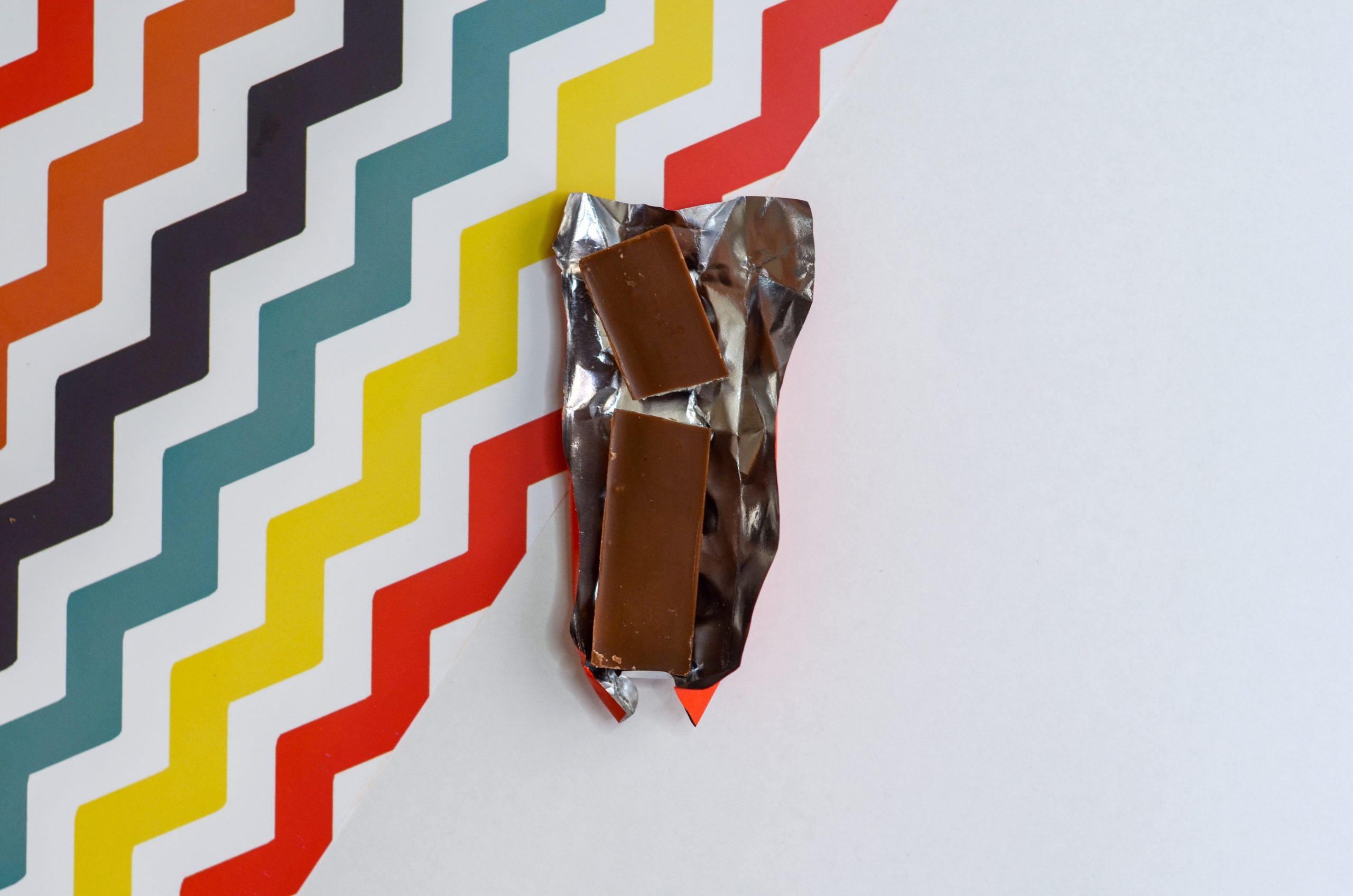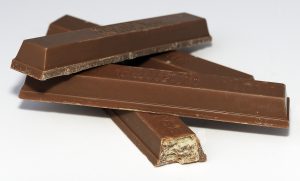Whether doing overtime in the name of protest or having one vending machine for every 24 people. Japan always amazes the world with its uniqueness and different ways of dealing with various problems. One such thing having a candy bar for good luck. Do you want to know what candy bar is considered good luck in Japan and why? Let’s find out!
Imagine getting candy before your exam or before going to an important event! It will fill your mouth with sweetness, and according to Japanese culture, it will bring you good luck and success in your life. That’s weird and interesting at the same time!
However, good luck candy was not in their culture since ancient times. So, what happened later? How does candy become a good luck charm in the country? And most importantly, what candy bar is considered good luck in Japan?
This article covers all answers to these exciting questions. We have researched news websites and checked multiple pieces and videos to bring this resource. If you are interested in knowing what candy bar is good luck in Japan, you got to read till the end!
Table of Contents
What candy bar is considered good luck in Japan?
KitKat is a good luck candy bar in Japan. Yes, the same KitKat available in over 80 countries is considered lucky to consume in Japan. As we mentioned, it was not the same since the beginning, but slowly, people viewed it as a good luck charm.
When nestle identified the trend, they took advantage of the situation, which shot up their sales in the entire country. We have also mentioned the most famous marketing campaign details in this article. Let’s finally understand why KitKat emerged as a lucky candy in the country.
The reason why KitKat became an excellent luck bar
When you understand what candy bar is considered good luck in Japan, let’s explore why it is regarded as a lucky candy.
Typically, Candies are not considered a good luck charm in Japan, but in Japanese, KitKat is pronounced as “Kitto Katto†and is similar to the Japanese phrase “Kitto Katsu.†In English, it means “you will win.â€
If we further break down the phrase, then the work “Kitto†means “surely or absolutely,†and “katsu†indicates “bound to win.â€
Since ancient times, people have wished their loved ones good luck on special occasions. Be it exams, interviews, starting a new business, etc., KitKat is a global brand, and nestle had no idea it was a match with a famous phrase.
When the company found their sales shot up during particular events in Japan, they investigated the matter and found this fact. Later, nestle benefited from this coincidence and promoted it using various marketing campaigns that helped them grow their business in Japan.
To date, the company benefits because of this coincidence, and that’s why they frequently launch new flavors of KitKat to maintain a steady demand in the country. Due to this, you can find some of the rarest KitKat flavors in Japan that are unavailable anywhere in the world.
When was KitKat launched in Japan?
Let us briefly understand the history of KitKat in Japan. KitKat is not a Japanese brand. Instead, it’s chocolate produced by Nestle, a popular multinational food and drink processing company based in Switzerland. Nestle was founded in 1866, and almost after 107 years, in 1973, they launched their first green tea-flavored KitKat in Japan.
People loved the chocolate because of its fantastic taste and flavor. Earlier, due to a lack of marketing channels, it didn’t get popular in the country and made marginal sales in the 20th century. Still, people considered it a lucky candy, but the lack of publicity didn’t advance the trend.
In the 21sthe t century, the company identified the trend. It took advantage of various marketing channels to make everyone aware of how their candy’s name resembles good luck, and people can gift KitKat to their loved ones as a gesture to show they must get success in their work.
KitKat became so popular that in 2014, the outsider brand defeated Japan’s indigenous number-one candy company, Meiji. To date, KitKat dominates Japanese markets with releases of frequent new flavors; they maintain their dominance.
At what places is KitKat mainly used as a good luck charm?
Commonly people consider gifting the KitKat to their loved ones when they go for something unique. However, certain events push the demand and increase sales—some of the events the company identified include.
During exams
The company noticed that its sales skyrocketed during January when most students appeared for exams in Japan. Parents like to gift their children a KitKat to show their love and wish them good luck in exams.
Also, children love to eat chocolates. When they consume a KitKat for exams, they love its taste and demand more. This is free marketing for the company and brings consistent sales for them. With that, nestle always try to increase their sale with paid marketing as well.
For Interviews
Japan has an extreme work culture where people live for their bosses. At times, this becomes a huge burden and a significant reason behind the increased suicide rates in the country. However, this helps Nestle because people love to gift their friends, colleagues, and children a KitKat to wish them luck with the job interview.
This doesn’t increase sale but help the company to maintain a steady demand throughout the year. That further adds a point to the popularity.
General
As we mentioned, gifting candies as good luck charm was not in Japanese culture since the beginning. It started because the name resembled the famous phrase. However, with marketing efforts, nestle was able to mix this into its culture slowly.
To date, whenever people show that they care for a person and think about their betterment, they gift them with a KitKat. Not just the exams or interviews, you can find people giving KitKats to each other all over Japan.
I hope you understand what candy bar is considered good luck in Japan. Let’s now figure out when nestle understood this fact and what they did to turn it to their benefit.
When did nestle notice the trend?
The company launched the KitKat candy in 1973 in Japan; at that time, they were unaware of the fact. Slowly, the company noticed the trend and came to know their sales shot up in particular months while remaining constant throughout the year.
Further investigation revealed the reason was parents gifting KitKat to their children as a lucky charm to gain success in their exams. Usually, the sales go up during January when there is an exam season in the country.
However, nestle hardly made any marketing efforts to grow this trend. Still, by the 21st century, they understood that if they didn’t take advantage of this, some other company might overtake them with a similar name. From there, marketing efforts made KitKat the most famous candy in Japan.
The marketing campaign that made it popular
Not only in Japan but some of the marketing campaigns by Nestle were noticed by the entire world and became a hot topic. The company received various awards for researching fantastic ideas that brought drastic changes in people’s mentality.
Some of the most popular marketing awards received by the company include:
- In 2005, Nestle won the Asian Brand Marketing Effectiveness Award for maintaining and taking benefit of the “Lucky Charm†trend.
- In 2009, Nestle successfully grabbed people’s attention by launching a campaign with Japan Post. The company sold various KitKat packages at this event, including a space to stick a stamp and write a message encouraging their families and friends. Because of this, KitKat packages can be mailed from 20,000 post offices across Japan (even from the remotest areas). This campaign was so successful that all promotional packages were sold within a month, and the company received a considerable marketing benefit at a minimum cost.
- Later in 2010, at the Cannes Lions International Advertising Festival, the campaign also won a mega grand Prix prize, and the entire world noticed it.
I hope you understand what candy bar is considered good luck in Japan and why they got so popular.
Are flavors of KitKat available in Japan?
You can find some of the rarest KitKat flavors in Japan that are unavailable elsewhere. Even Nestle frequently launches new flavors to maintain a consistent demand in the country and earn profits from it. Here are some favorite flavors of KitKat that you can find in Japan:
- Sake flavored KitKats
- Strawberry KitKats
- Japanese Green Tea KitKats
- Cherry Blossom flavored KitKats
- Brown sugar KitKats
- Soy sauce KitKats
- White chocolate KitKats
The list is very long, and you will be surprised to know Nestle currently sells over 300 unique KitKat flavors in the country. However, most are seasonal, and you cannot find them throughout the year.
It’s still surprising that chocolate flavor dominates in all other countries while it’s not the same in Japan. So, among all these, “what candy bar is considered good luck in Japan?” We would say the tea-flavored KitKats are among the most sold ones.
Does this coincidence continue to benefit Nestle?
Yes, with strong and consistent marketing efforts, nestle was successful in including the KitKats in Japanese culture. Most people feel incomplete if they don’t gift their loved ones a KitKat to wish them good luck. Mostly, parents give this candy to their kids.
Also, since childhood, children get a habit of eating KitKat that goes on throughout adulthood and later in life. This brings a consistent demand for the company even with fewer marketing efforts.
What does the company plan further?
We don’t see any big marketing plan arriving anytime soon, and KitKat already holds the number one place in the Japanese candy markets. Maybe they will invest more in marketing if they find any other brand stealing their customers. Still, there are no official announcements from the company.
However, Nestle always launches new and seasonal flavors of KitKat that people love. Like Cherry Blossom flavored KitKats is only available during a specific season.
Let’s wait and see what lies further in the marketing of KitKats in the country.
Do we have similar coincidences around the world?
The brands usually go after selecting the names that people are familiar with and should easily remember their product whenever they hear it. But the case of KitKat is different. The candy had an established brand name before it came to Japan.
It was a mere coincidence that the name resembles a famous Japanese phrase. These changes happen by luck and are challenging to find in the world.
But we are pretty sure there might be similar coincidences with other brands we are unaware of. We researched some resources and news articles but failed to find them; if you know about a similar condition that benefitted other companies worldwide, please let us know about the same in the comments below.
I hope you understand what candy bar is considered good luck in Japan and why!
Final thoughts
Candy bar good luck in Japan is not a tradition, but Kit Kat is still viewed as a good luck candy in the country because its name resembles a famous Japanese phrase, ” Kitto Katsu,†which means you will surely win.
Parents love to gift KitKat to the students appearing for exams to wish them good luck. The coincidence and extreme marketing efforts made KitKat the most popular candy in Japan. Also, over 300 flavors of KitKats are available in Japan that you cannot find elsewhere in the world.
Nestle benefits from this, and with consistent marketing efforts, the company maintains steady sales throughout the year. They see massive growth in January because of the exam season.
We hope you learned something new about Japanese culture and KitKats. Please let us know your thought on this topic. Leave your comments below.




